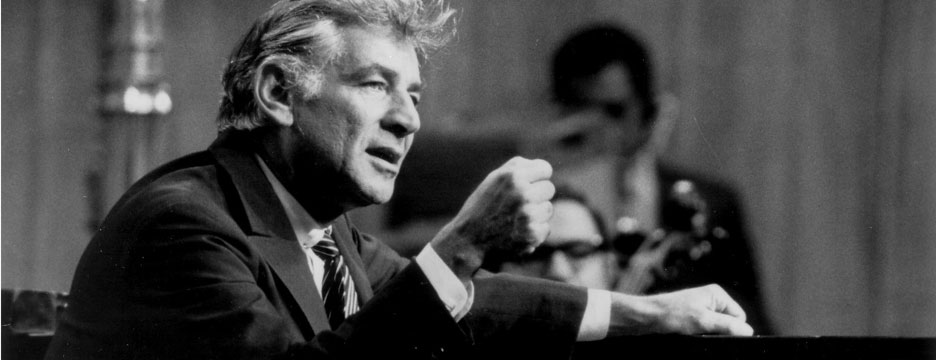Becoming a musician incorporates many facets, from learning how to play an instrument to learning how to understand and appreciate music.
One of the best series in the history of music appreciation is Leonard Bernstein‘s Young People’s Concerts. Below are videos in four parts of the show “What Does Music Mean” which aired on CBS in 1958.
The first part explains that many meanings can be ascribed to the same piece of music, and that music in and of itself is not about anything in particular:
Leonard Bernstein: Young People’s Concerts | What Does Music Mean (Part 1 of 4)
In the second part, Bernstein conducts while announcing various parts of a story he made up which coincide with music the New York Philharmonic is playing live. (It turns out the music is from Don Quixote.) Bernstein goes on to state that no matter what backstory is assigned to it, music can be exciting based on its own merit. Later, Bernstein plays Beethoven’s Pastoral Symphony No. 6, remarking on the sentence at the beginning of the score “Awakening of cheerful feelings on arriving in the country.” Bernstein explains that the music is peaceful, calm and happy but it could just as easily have been written about swinging in a hammock or being happy that your stomach no longer aches!
Leonard Bernstein: Young People’s Concerts | What Does Music Mean (Part 2 of 4)
In the third part, Bernstein goes beyond music that tries to tell a story and delves into music that tries to paint a picture. As an example, Bernstein talks about how Moussorgsky was inspired to write “Pictures at an Exhibition” after viewing art paintings of children playing, baby chicks picking and eating, and the stately stone gate at the entrance of the Russian city of Kiev. Later, Bernstein talks about music that describes emotions and feelings, using Tchaikovsky’s Fourth and Fifth Symphonies to illustrate. Bernstein concludes:
Now we can really understand what the meaning of music is. It’s the way it makes you feel when you hear it. Finally we’ve taken that giant step and we’re there, we know what music means now.
Leonard Bernstein: Young People’s Concerts | What Does Music Mean (Part 3 of 4)
In the final part, Berstein has the orchestra play a piece by composer Webern, stating that young people might understand it better than older people. (Bernstein surprisingly introduces Webern’s music as “modern” and “crazy,” and I was expecting a very dissonant piece, but it’s actually delicate and beautiful music.) Later, Bernstein plays the same notes with an ominous tone, then a light and carefree tone, stating:
The meaning of music is in music. It’s in the melodies and the rhythms, and the harmonies, and the way it’s orchestrated. And most important of all, in the way it develops itself.
The orchestra then plays Ravel’s “La Valse,” which Bernstein introduces as “fun to listen to.” Watching Bernstein enjoy himself so gracefully while conducting is a treat.
Leonard Bernstein: Young People’s Concerts | What Does Music Mean (Part 4 of 4)
Bernstein’s Young People’s Concerts series include a variety of topics, such as “What is Melody;” Folk music; American music; Latin American music; humor in music; and composers such as Gustav Mahler and Dmitri Shostakovich.
What do you think about the Bernstein series? What are your favorite music appreciation pieces or videos?
Photo courtesy of CBS, The International Review of Music
Giuliana is a writer and social media strategist who lives in Jersey City with her husband and adorable Maltese puppy, Bianca. Connect with Giuliana on Google+


